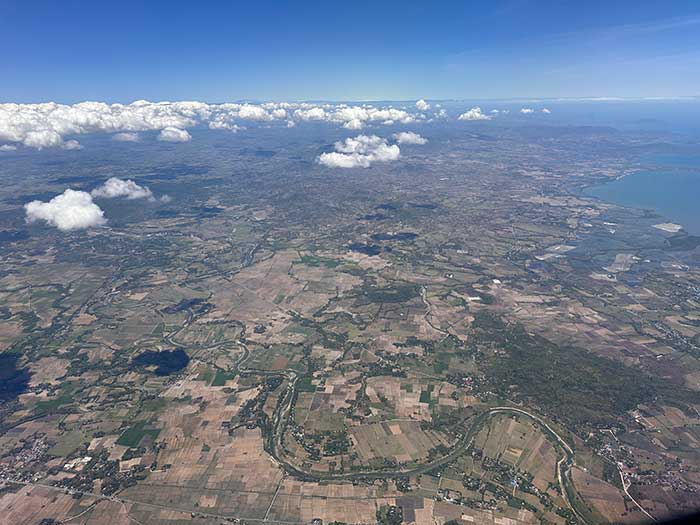
By Rjay Zuriaga Castor
The planned cloud seeding over Western Visayas will proceed despite the state weather bureau’s declaration of the onset of the rainy season.
Iloilo Provincial Agriculture Office head Ildefonso Toledo confirmed to the Daily Guardian on Wednesday that the Bureau of Soils and Water Management is currently in Silay City, Negros Occidental.
“If they cannot do it this week, it might be next week. They are just observing the weather, considering the eruption of Mt. Kanlaon on Monday. Their latest update is Monday, so maybe next week they will proceed with the cloud seeding,” he said. “Everything is already in place and it is ready to go.”
The cloud seeding operation will be based in Bacolod City, with the Bacolod-Silay International Airport as the operation center.
The prevailing northeast monsoon, or Amihan, is expected to bring the induced rain to Panay Island.
Amid criticism that the procedure is already behind the farmers’ needs, Toledo emphasized that the cloud seeding this month is “not too late” since the rain is not yet sufficient, and some farmers have already started planting their crops.
“The negative reactions are just apprehensions. We have experienced rain in the past weeks, but if we look at it, it is not sufficient to sustain our irrigation systems for a full blast in our first cropping season,” he added.
Toledo stated that he respects the public’s concerns but emphasized that the procedure will proceed since the national government has already approved its budget.
On May 23, Toledo called for an emergency meeting with the municipal agricultural office heads, who are in unison regarding the cloud seeding.
He also maintained that watermelon farmers may not be greatly affected by the increased rain, as most of them are already in the harvesting stage.
The production loss in Western Visayas due to the El Niño phenomenon is at P1.5 billion, affecting a total of 37,223 farmers and fisherfolk.
Risks amid Kanlaon’s Unrest
With Alert Level 2 maintained by the Philippine Institute of Volcanology and Seismology (PHIVOLCS) over Kanlaon, the cloud seeding may bring potential hazards to the area.
The recent phreatic and brief explosive eruptions of Kanlaon on Monday led to significant ashfall and the detection of sulfurous odors across six areas in Negros Occidental, including several villages in Bacolod City.
The volcano’s emission of a voluminous and incandescent plume that rapidly rose to 5,000 meters above the vent resulted in the formation of pyroclastic density currents descending the southern slopes over a distance of two to three kilometers.
PHIVOLCS reported that the emission of volcanic sulfur dioxide gas has been irregularly increasing since May 2023, reaching an average of 1,273 tonnes/day this year.
As of June 4, sulfur dioxide gas emission measured by campaign survey has peaked at 4,113 tonnes/day, marking the highest flux this year and the second-highest ever recorded from Kanlaon.
PHIVOLCS warned in a press conference on Tuesday that “if seismic, ground deformation, and volcanic gas parameters worsen, a magmatic eruption may become likely. Eruptive activity could generate volcanic hazards that will endanger areas within the lava flow and PDC hazard zones.”
A scientist cited in a 2020 report on One News cautioned that induced precipitation resulting from cloud seeding could lead to acid rain, given the presence of sulfur emitted by the volcano, which can dissolve in rainwater.
Acid rain poses environmental risks, including damage to crops, forests, and aquatic ecosystems, and can have long-term effects on infrastructure by weakening it through acidity.
The planned cloud seeding operations after Kanlaon’s recent volcanic activity may also affect the agriculture sector by altering soil acidity, which is crucial for crop cultivation.




















